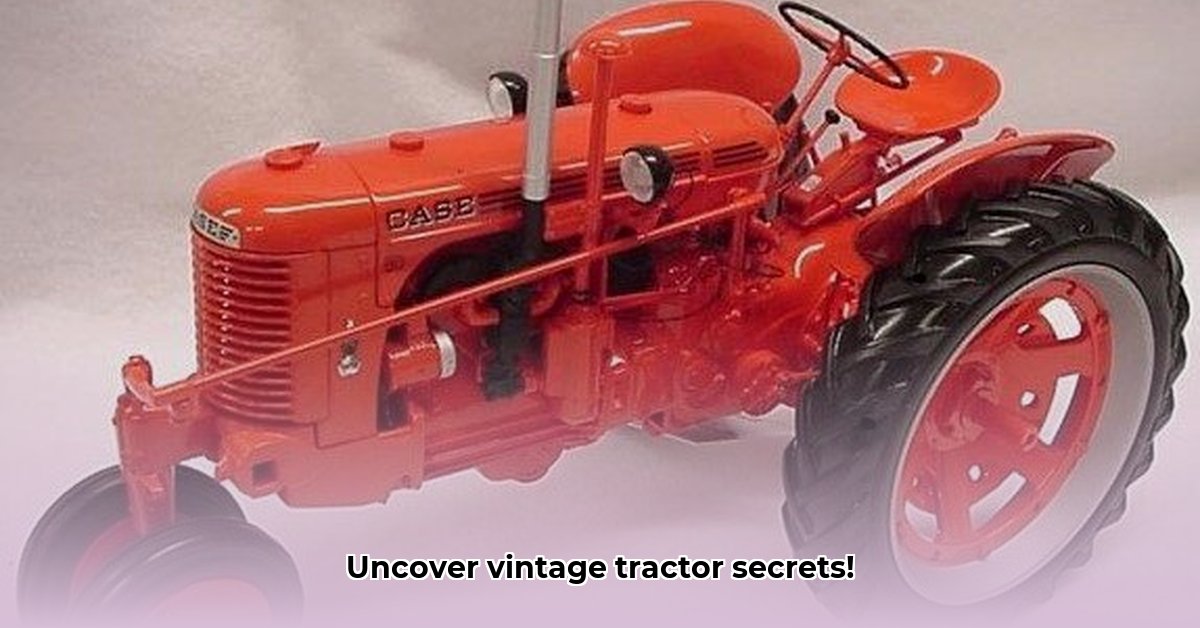
The satisfying rumble of a vintage Case tractor isn't just nostalgia; it's the echo of a century of innovation in agriculture. These aren't mere machines; they're historical artifacts, embodying ingenuity and reflecting the evolution of farming technology. From steam-powered behemoths to the sleek designs of later models, the Case legacy is rich with compelling stories and fascinating engineering feats. This journey delves into the heart of vintage Case tractors, examining key models, technological advancements, and the enduring appeal that keeps these machines cherished by collectors worldwide. For more on a specific model, check out this Case 1494 info.
The Dawn of Steam: Conquering the Fields with Power
Imagine the late 19th and early 20th centuries: vast fields and backbreaking labor. Case's early steam tractors, powerful yet cumbersome, were a revolutionary force. These weren't just machines; they were symbols of a technological revolution. While rare today, their impact reverberates through history. They didn't just improve plowing speed; they fundamentally changed farming practices, setting the stage for the internal combustion engine era. The sheer spectacle of these steam giants—massive engines hissing steam, conquering challenging terrains—was a testament to human ingenuity and a harbinger of advancements to come. Did you know that early Case steam tractors required significant infrastructure, including water sources and skilled operators, hindering widespread adoption?
The Internal Combustion Engine: A Technological Leap Forward
The transition from steam to internal combustion engines marked a pivotal moment. Replacing a complex steam engine with a more efficient and maneuverable counterpart was a game-changer. Suddenly, tractors became more practical and accessible to the average farmer. This period witnessed Case engineers tackling the challenges of this new technology, creating reliable and powerful machines. Size, weight, fuel consumption, and performance were drastically altered. Tractors became more compact, easier to operate, and less reliant on elaborate setups. This shift significantly impacted the market, making Case tractors more approachable for a larger audience of farmers.
Key Models: Shaping Agricultural History
Several Case models stand out, not just for their power but their lasting impact. The Case Model "C" series, for example, was a groundbreaking success in the internal combustion engine era. Its simple design and reliability created a devoted following. The iconic Case 10-20, considered by many a true workhorse, remains a symbol of strength and endurance. The "VAC" series further cemented Case's reputation for durability and performance. These models weren't simply machines; they represented a commitment to innovation and responding to the evolving needs of farmers. Each design reflected the technological advancements and the changing demands of the agricultural landscape.
| Model | Era | Key Features | Significance |
|---|---|---|---|
| Case Model "C" Series | Early Gasoline Era | Simple design, reliable operation, affordable price | A major success, significantly impacting early gasoline tractor sales. |
| Case 10-20 | Early Gasoline Era | Improved power and efficiency | Marked a substantial step towards wider market adoption |
| Case "VAC" Series | Diesel Era | Powerful diesel engines, exceptional durability | Solidified Case's reputation for robust, long-lasting machines. |
The Case-International Harvester Merger: A New Chapter Begins
The 1983 merger of Case with International Harvester created Case IH, a major player in agricultural machinery. While this marked the end of an independent J.I. Case, it also secured the Case legacy. The impact of this merger is still debated today, particularly within the collector's community. It's a complex story; while it combined resources and expertise, leading to further advancements, it also altered the course of the company, influencing the production and availability of vintage models.
The Enduring Legacy: Vintage Case Tractors Today
Today, vintage Case tractors are highly sought-after by collectors and enthusiasts. But why? These aren't just old machines; they're tangible connections to agricultural heritage. Restoring them is a deeply personal project, uniting people with a history of hard work and technological innovation. The cherished sound of a well-maintained engine, the feel of the sturdy levers—these sensory experiences forge a strong bond between the machine and the owner, creating a vibrant and dedicated collector's community.
Pivotal Points in Case's History:
- Case’s early success with steam-powered equipment laid a foundation for future innovation.
- The strategic shift to internal combustion engines proved crucial for market dominance.
- Key model innovations, like the "C" series and 10-20, defined Case's identity and appeal.
This journey through the history of Case tractors demonstrates the importance of adaptation, innovation, and the enduring legacy of well-engineered machines. The story of Case tractors underscores a powerful connection between technological advancement and the evolving needs of the agricultural world. The passionate collector community serves as a testament to the lasting impact of these historic machines.